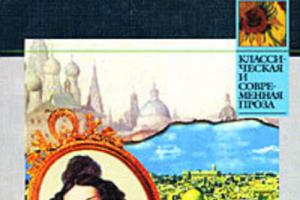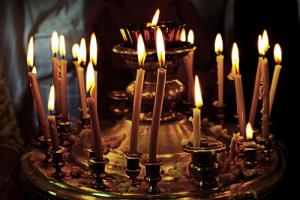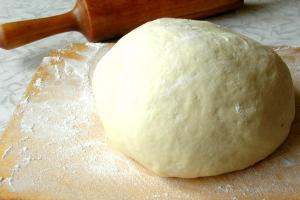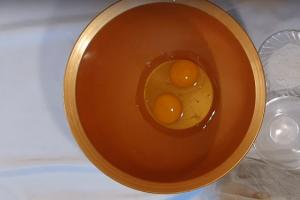How to prepare whitewash for trees with your own hands? Many gardeners do not see this as a problem and carry out this event annually, buying ready-made garden mixture at a hardware or gardening store. We will tell you how to make whitewash for trees with your own hands, which would be long-lasting and weather-resistant.
Read in this article:
Recipes proven by experience
Whitewashing compositions have various purposes. There is a simple treatment of trees with a lime solution, which is carried out in the spring. But it is not very effective and is usually washed off the trunks after a few rains. To make the solution stick better, you need to add manure, clay or glue to it. It’s good if you add vitriol - this will ensure good protection from pests and various infections.
The age of the trees is also taken into account. If they are old, they will tolerate more additives than young seedlings. Natural additives in the form of chalk and lime are suitable for them. Delicate skin should not be clogged with glue. Trees should breathe freely and grow actively.
In order not to waste time preparing the solution, purchase ready-made whitewash in the store. It contains selected components, including protective and adhesive, but at the same time, your pets will be able to breathe freely. Note that whitewash is sold both dry, then instructions are attached to it, and diluted.
Gardeners claim that acrylic paint is absolutely not suitable for the procedure. All its advantages are only that it does not wash off for a long time and looks beautiful. But it does not provide air access.
There are many whitewash options fruit trees which are presented below.
Do-it-yourself spring whitewashing compositions (components)

To make whitewash for trees with your own hands, rely on recipes tested by the experience of gardeners. The components are actually the same and based on the presented combinations, you can make your own garden solution based on the properties.
Properties of components and their role
- Lime or chalk is the cheapest option. White color is achieved. If the recipe contains copper sulfate, fresh slaked lime will soften its acidity.
- Clay will create viscosity, and this will help repair damage and cracks in the bark. It is better if you use white clay for a “radiant” whiteness. In addition, this layer is an excellent protection for trees from burns.
- Fungicides are precisely these chemicals that will help suppress pathogens.
Today, the inexpensive, and most importantly high-quality and effective Belarusian drug Azofos is in demand. It is easy to use. The composition affects the tree in the form of a small pesticide load. But despite its advantages, there are also disadvantages. The prepared composition must be used fresh and be sure to stir from time to time, due to the presence of copper in it, a heavy element. - Copper sulfate is called a folk fungicide. It is the best assistant in the fight against fungus, mold and various harmful microorganisms. For preventive measures, vitriol is diluted in 10 liters of hot water - 200–300 g. In advanced cases, it is not recommended to carry out treatment by increasing the dose. Option - repeat again.
- Carbolic acid is a threat to rodents. Both mice and hares run away from her. If you want to keep them out of your garden, then add a tablespoon of carbolic acid to the finished whitewash.
- Milk in the solution gives it viscosity and it becomes less fluid. But that's not all. Based on milk product, the layer stays on the bark for a long time and is not washed off by rain. And lactic acid bacteria destroy pathogens and pests. You can use serum.
- PVA glue, carpentry glue and casein glue - this trio will always provide moisture resistance. We pay attention to PVA, the glue is cheap, but it will not allow trees to breathe deeply, unlike its two brothers.
- Cow dung feeds the tree through the bark.
Cooked garden solutions will be ready when you bring them to the consistency of sour cream. Mixtures should not be applied in a layer thicker than 2–3 mm. If it drains, it means it is not ready for work.
Below are the compositions for whitewashing, read, analyze, apply.
Whitewashing solution made of lime, clay, glue and vitriol
This mixture will stick well to the tree bark, will not wash off for a long time and, most importantly, is environmentally friendly. Suitable for mature trees.
- We dilute wallpaper glue (50 g) or wood glue (100 g) in warm water(6 liters in half a bucket).
- As soon as the glue dissolves, add slaked lime (2 kg).
- We dilute copper sulfate only in hot water(400 g) and cool. Pour into the mixture.
- Add 1 kg of manure and clay.
In terms of thickness, the composition should have a sour cream consistency and a homogeneous mass.
Lime, copper sulfate and clay
The mixture has been used for many years and is still popular among gardeners.
- Suppress lime (2.5 kg) with water.
- Lime is poured into a 6-liter bucket of water and covered with a lid. Let it boil for 15–20 minutes.
- Copper sulfate (300 g) is added to a bucket of calmed lime. How to breed it is described above.
- Clay (2 kg) is poured.
- The solution is thoroughly mixed. The readiness of the mixture is determined by normal density and the absence of lumps.
Trees need to be whitewashed in two layers.
Lime, manure, clay
Used for seedlings, young and old trees. Sensitive plant bark will respond well to simple, environmentally friendly ingredients that will not clog pores. It must be applied with a wide brush, starting from top to bottom.
- Slaked lime (2 kg) is mixed with manure (1 kg) and clay (1–1.5 kg).
- Add water and bring the mixture to a sour cream consistency.
- Manure and clay will give the mixture the ability to disinfect and have a good adhesion effect.
According to the recipes of the gardener A.P. Belov.
Do-it-yourself whitewashing for trees based on the experience of A.P. Belov. includes a number of proven recipes that have a positive effect on the protection and health of garden plants.
After preparation, the trees must be whitened immediately, stirring the solution frequently.
For 10 liters of water:
- freshly slaked lime (2kg);
- copper sulfate (300 g);
- carbolic acid (1 tbsp).
For a solution in a bucket of water:
- slaked lime (2 parts);
- pre-soaked clay without lumps (1 part);
- fungicide (300 g);
- glue of your choice from the above (100 g).
The following solution is suitable for all trees. First mix with a little water:
- chalk (2 parts);
- clay (1 part);
- milk or whey (1 glass);
- fungicide (1 cup).
- By adding water we achieve a sour cream consistency.
The following composition is considered durable and is used several times.
- For 7 liters of water take:
- copper sulfate, which is diluted hot water(300 g);
- slaked lime (2 l);
- casein glue (100 g).
An effective whitewash solution for sunburn in winter
Quicklime (2 kg) is quenched with water (6 l). With this ratio of components, the quenching reaction is the most gentle. Cooled slaked lime is mixed with clean river sand (2 kg) and white water-based paint (1 kg).
Having achieved a homogeneous mass, the trunks look snow-white. This is thanks to the sand. Clay in solutions gives a yellowish color.
Solution for coating tree trunks
Suppress lime (2 kg) and combine with clay (1 kg), cow dung (1 kg) and copper sulfate(300 g). The product is more suitable for the trunk. It will not hold well on thin branches.
You need to know this: do-it-yourself whitewash for young trees should be prepared according to the above recipes using 20 liters of water. If the lime is too concentrated, it will harm the fragile bark.
Garden areas in large quantities Today they offer a choice of ready-made water-based and acrylic paints. At the same time, hand-made whitewashing of trees is still relevant. The advantages lie in the breathability of the layers, which is very important for young trees. By preparing solutions yourself, you can adjust the composition. This not only saves money, but also reduces the impact of chemical ingredients on trees. The only drawback is the fragility of such whitewashing.
From the experience of gardeners - reviews
“I myself prepare whitewash for trees in the spring according to my grandfather’s recipe: I add chalk (3 kg) or lime in the same amount to a 10-liter bucket. I let it brew for a day. I stir several times. As many people recommend, I don’t add glue. It seems to me that he does not allow the trees to breathe. But in the fall the solution is different: I mix clay and slaked lime equally to make a thick mixture and “paint” the trunks. Under such a crust, neither frosts nor rodents, nor insects that try to find shelter in the bark are afraid.” Yaroslav I., 49 years old.
“I trust my intuition and a beautiful garden, for which I always prepare a solution with slaked lime - 2 kg, copper sulfate - 300 g and casein glue - 50-100 g. I dilute everything in a ten-liter bucket of water. I go over the trunks with whitewash, and after a couple of hours I repeat. The recipe did not disappoint. The trees are healthy and bear fruit well.” Valery M., 60 years old.
“There are a lot of trees in my garden, so it’s hard for my hands to whiten each one. I use a spray bottle that helps me with this activity. Important condition: the mixture should not have lumps and sit for two hours before use. I'm sharing the recipe. For the solution, I take 2 kilograms of slaked lime per 10 liters of water, 400 grams each of casein glue and copper sulfate. For seedlings, more water is needed – 20 liters.” Katerina Pozdnyakova, 50 years old.
Let's sum it up
Do you need to whitewash trees yourself or not? What does it give?
- Protects trees from sun rays and burns.
- From frostbites.
- Fights pathogenic fungi.
- Eliminates the danger of pest attack.
- Cleans the bark of trunks from moss and lichen.
All gardeners want their trees to grow healthy and produce big harvests fruits Therefore, we confidently note the fact that whitewashing trees with your own hands is the most useful and necessary for the garden and its green pets. Let us add that the procedure must be carried out when the bark is dry.
Any experienced summer resident knows that fruit or ornamental trees need additional protection bark from cold weather, burns and pests. lime with copper sulfate is the most important procedure that is easy to carry out yourself. the main task consists of correct selection proportions of chemicals that will have a beneficial effect on the tree.
Advantages of whitewashing trees with lime and copper sulfate
Often, inexperienced gardeners have the misconception that whitewashing trees is done for aesthetic purposes. Indeed, neatly planted trees with white trunks look much more beautiful, but lime and copper sulfate for whitewashing trees protect the bark from at least three unfavorable factors:
- Burns. in winter Sun rays are reflected in snowdrifts, which is why tree bark runs the risk of being burned.
- Temperature changes. In the off-season, the air temperature at night and during the day is very different, which is why cracks may appear on the bark.
- Pests. Insects and their larvae are easily found in the bark after winter, and their penetration is prevented by applying a chemical composition.
Preparation of the solution
 There are at least two most effective recipes for a mixture for whitewashing trees with lime and copper sulfate. A properly diluted solution takes on a light blue tint and has a consistency similar to thick sour cream. Excessive drips formed after painting the trunk indicate its insufficient thickness.
There are at least two most effective recipes for a mixture for whitewashing trees with lime and copper sulfate. A properly diluted solution takes on a light blue tint and has a consistency similar to thick sour cream. Excessive drips formed after painting the trunk indicate its insufficient thickness.
Recipe 1
For 10 liters of water, take 2 kg of lime and 250 g of copper sulfate. Additional ingredients will be 1 kg of clay and 0.5 kg of cow dung. The components are combined in any order and stirred until smooth.
Recipe 2
Dilute 2.5 kg of lime and 0.5 kg of copper sulfate in 8 liters of water. Add 200 g of wood glue to the resulting mass. For greater efficiency You can add any pest control agent to the solution.
Surely everyone knows how to dilute copper sulfate for whitewashing trees correctly: the blue powder is stirred in water until completely dissolved. Lime should be slaked in advance and added in dissolved form. Ready-made slaked lime is also sold in stores, although it does not have the best reputation. When preparing the solution at home, you should use protective gloves and goggles to prevent the chemical from getting into your eyes and hands.  The extinguishing process is carried out several hours before the planned whitewashing of trees with lime and copper sulfate.
The extinguishing process is carried out several hours before the planned whitewashing of trees with lime and copper sulfate.
For 1 kg of powdered or lump lime, take 2 liters of water. Lime should be gradually added to the water, stirring with a wooden stick until a homogeneous mass is obtained. Before combining with copper sulfate, the mixture should be strained.
Painting works
 Whitewashing of trees is carried out 2-3 times a year under favorable weather conditions. Autumn whitewashing is carried out in November, when the showers pass and the temperature drops below zero. Only lime can be used as the main component for preparing the mixture in the fall. Whitewashing trees with lime and copper sulfate in the spring should be done before insects appear. Copper sulfate has disinfectant properties and neutralizes the activity of pests that move to trees with the arrival of spring.
Whitewashing of trees is carried out 2-3 times a year under favorable weather conditions. Autumn whitewashing is carried out in November, when the showers pass and the temperature drops below zero. Only lime can be used as the main component for preparing the mixture in the fall. Whitewashing trees with lime and copper sulfate in the spring should be done before insects appear. Copper sulfate has disinfectant properties and neutralizes the activity of pests that move to trees with the arrival of spring.
Whitewashing of young trees planted in the ground recently should be postponed to the next season. Alternative way bark treatment can be sprayed with a three percent Bordeaux mixture, which has a more gentle effect.
Whitewashing with requires preliminary preparation trees. The whole procedure is carried out in five stages:
- Cover tree trunk circles film. The solution should only end up on the trunk, and not past it!
- Clean the trunk of old bark, moss and lichen. Cleaning is done using a construction spatula and a wire brush.
- Disinfect the bark using Bordeaux mixture or copper sulfate solution (3%) by spraying.
- Seal large wounds on the bark using garden varnish or a clay mash.
- Apply the solution paint brush in two layers. The size of the brush is selected depending on the diameter of the trunk. U large trees The forks should be thoroughly lubricated. You can use a spray gun, but the cost of the mixture will be higher.
 The process will be successful and the result will remain long-lasting if you know exactly how much copper sulfate to add to the whitewash. An excess of it will burn the tree bark, so there should be significantly less lime.
The process will be successful and the result will remain long-lasting if you know exactly how much copper sulfate to add to the whitewash. An excess of it will burn the tree bark, so there should be significantly less lime.
Preparing Bordeaux mixture
 Bordeaux mixture is a solution of copper sulfate in lime milk (slaked lime with water). The finished substance has a lower concentration, unlike the whitewash mixture. Application by spraying eliminates fungus and bacterial diseases from trees and plants. The mixture is prepared according to the following recipe:
Bordeaux mixture is a solution of copper sulfate in lime milk (slaked lime with water). The finished substance has a lower concentration, unlike the whitewash mixture. Application by spraying eliminates fungus and bacterial diseases from trees and plants. The mixture is prepared according to the following recipe:
- Copper sulfate – 300 g.
- Lime – 450 g.
- Water – 10 l.
The main condition that must be observed when preparing the solution is compliance with proportions and consistency, otherwise the mixture will turn out to be too concentrated or of poor quality. For breeding everyone chemical substance you will need the same amount of water - 5 liters each. Copper sulfate and then lime are diluted in water in different containers. The first solution is poured into the second and stirred wooden spoon. Bordeaux mixture is used in the first few hours after preparation. Storage in iron containers is unacceptable.
In a Bordeaux mixture, a solution of copper sulfate is poured into lime milk. The sequence cannot be changed!
Spring whitewashing with copper sulfate and lime - video
26.12.2017
6 372
How to whiten trees in spring and how to do it correctly?

Not every gardener knows how to whitewash trees in the spring, but it must be done in such a way that it is not washed away by rain and is beneficial, so you need to know what is the best way to whitewash - chalk, facade paint, PVA glue, acrylic or water-based paint, as well as how to properly dilute lime and when is the best time to use it...
Why do you need to whiten trees in the spring and when should you do it?
To prevent the formation of microcracks and to destroy the insects that have accumulated in the folds of the bark during the warm period, the trunks of fruit trees are whitened in the fall, but we will look further into why whitewashing of trees is needed in the spring.
You can start whitewashing the bark of trunks at the beginning of the year already in February or early March - during this period, when the sun's rays are highly active, the bark can heat up to +11 ° C during the day, which promotes intense movement of sap. At night, the air temperature can drop to -10 ° C, as a result of which the sap freezes and tears the bark tissue. Whitewashing trees with lime or another composition will reflect the sun's rays and protect the bark from excessive heating - trees treated in this way will wake up at the right time.
How to whiten trees in spring - compositions and mixtures
The most important quality that any whitewash for tree trunks must meet is a bright white color. According to experienced gardeners, the best way to whiten trees in the spring is slaked lime; this substance reflects the March sun well and has disinfectant properties. You don’t know what to whitewash trees with so that they don’t wash off - a durable lime crust does not dissolve with water and will ideally last on the bark throughout the spring and summer months.
If there is no lime on the farm, you can replace it with ordinary white water-based paint, and to make the paint adhere better and more evenly to the trunk, tar soap is mixed into it. Besides liquid soap The following components are added to the composition (per bucket):
- 1 kg of manure and 200 g of copper sulfate;
- 1 kg of fatty clay, the same amount of manure and 250 g of vitriol.
How to whiten trees correctly - technology
It is not enough to know how to whiten trees in the spring - the technology for performing this procedure also plays a role important role in maintaining a healthy cortex. The sequence of actions in this case is as follows:
- Pre-treatment of the trunk and its preparation for painting;
- Direct whitewashing;
- Cleaning.
Before slaking lime to whitewash trees, it is important to prepare them for the processing process - if you paint unprepared bark, it risks being damaged, drying out and flaking. The trunk must be carefully examined, growths, lichens and moss must be carefully scraped off it, and thin brushes can be used to clean out larvae and adult insects from the folds of the bark. Cracks in the bark that have formed over the winter must be treated with garden varnish.
The second stage of preparation is disinfection from bacteria and microorganisms that are carriers of diseases; this process is important to carry out in dry weather.
During pre-treatment, you need to spread a cloth or film around the trunk, where dead particles of bark, damaged areas and insects will fall, and after finishing the work, the cloth along with the waste material is destroyed.
The most convenient way to apply lime or paint is with a small roller or brush; a spray bottle is perfect for this purpose. The trunk should be painted no lower than one and a half meters from the ground, the skeletal branches should be whitened at the same level, and so that the solution is not washed off from the bark by precipitation before it dries tightly to it, painting should be done in dry weather.
Gardeners as an alternative to slaked lime, chalk or water-based paint use Bordeaux mixture or (solution) - this effective means, helping to quickly get rid of insects, their larvae, bacteria, fungus, but it is important to prevent the liquid from getting into the soil under the tree.
Others replace whitewashing with a mixture of straw, oily clay and fresh manure, and to make this mixture stick better and adhere to the trunk, grated laundry or tar soap is added to it.
Knowing how to whiten trees in the spring and how to do it correctly, the garden will definitely thank you with healthy growth and a rich harvest!
Hello readers of my blog!
Today in my article I will tell you when to whitewash trees and how to prevent it from being washed away by rain.
Winter is the time when the garden rests and gains strength for the upcoming harvests. Precisely, at this time it is necessary to protect the garden from sunburn, serious wounds and rodents. Refers to whitewashing garden trees This protective measure must be taken seriously, not ignoring this, especially for young trees. Treating trees is much more difficult. (
First, I would advise you to get a wide brush for whitewashing garden trees and an iron brush for cleaning tree trunks. When whitewashing, wear a raincoat or something that you don’t mind getting dirty.
Tree whitening process
Before whitewashing trees, I inspect the trunk and skeletal branches. If there are cracks or damage, they must be covered with garden varnish. I recommend cleaning the trunk of an adult tree with an iron brush, spreading material or film under the tree, so that later it is easier to remove all the scraped off residue and burn it. There is no need to get too carried away and rip off the bark with effort, but only what can be easily peeled off, since various pests overwinter under the bark and will begin to multiply in the spring. Clean hollows and frost holes to healthy tissue, treat with a solution of 5% copper or iron sulfate. After treatment, the hollows must be sealed with cement and sand (1:3). Tie with waterproof film until dry. Now special paints for whitewashing have appeared on sale, which last much longer on wood than ordinary lime. So I suggest you use them for whitewashing, but by the end of winter you still need to whitewash the trees. You need to whitewash both the trunk and large skeletal branches of the tree, coating all areas of the branches.
When to apply whitewash to wood
The can of whitewash paint states that it should be applied in dry weather (I think no one would think of whitewashing wood in the rain), at a temperature not lower than 5 degrees C. Having chosen a dry, non-frosty day off, you can go to the dacha and whitewash the trees. Everything is absolutely correct, and can be easily done if your site is close to home. What should those who have a dacha 100 km away do? from the city and you go there once a week autumn period? These recommendations are becoming difficult to implement. You arrived at the site for the weekend, and then the autumn rain pours, good weather stood in the middle of the week when you were at work. And in winter, getting to the dacha in the snow is generally an impossible task.
What to do?
The method is quite simple. Before the onset of autumn rains, choose a dry sunny day. We whitewash the trees and wrap the tree trunk with twine or synthetic cord. We tie garbage bags around the trunk over it. white made of polypropylene (sold in stores). We cut the bag to get a panel and secure it with a cord. What does this give us? The white cloth prevents the whitewash from being washed away by upcoming rains, although air passes through well, because the bag consists of separate strips and the bark will not support it in the spring.
In the spring, we remove the harness and fold it until next fall.
A few tips for making your own whitewash:
For a 10 liter bucket, take 2-3 kg of freshly slaked lime or chalk, 50-100 g. casein glue, 400-500 gr. copper sulfate dissolved in hot water. Dilute this solution with water until the consistency of sour cream is obtained.
Grandfather Ivan’s advice on preparing mash for coating
:
For 10 liters of water, take 2-3 kg of clay, add fresh mullein, instead of part of the water, add 2 liters of skim milk to this mixture (fresh milk should be allowed to sit for a day and the cream should be skimmed off it, since fatty milk can harm the tree). The chatter will protect the tree from burns and moss formation.
Have you already spent whitewashing trees in your garden? Winter is just around the corner.
See you again on my blog “In the garden, in my vegetable garden.” Be the first to receive articles by subscribing to blog updates.
A mandatory event for a gardener is whitewashing fruit trees in the spring, and the timing is dictated by the climate. Important in early spring choose dry weather and carry out protective and preventive treatment of fruit trees. Spring whitewashing of plants is a sign of the beginning of the struggle for the beauty and health of the garden, the battle for the harvest.
Why are fruit tree trunks whitened?
 Sign healthy tree is the bark of a characteristic color for the breed, without cracks or burrs. But only a young tree can boast of an absolutely clean trunk. Later, roughness and microcracks appear in which pests can lay eggs, fungi and lichens can introduce spores.
Sign healthy tree is the bark of a characteristic color for the breed, without cracks or burrs. But only a young tree can boast of an absolutely clean trunk. Later, roughness and microcracks appear in which pests can lay eggs, fungi and lichens can introduce spores.
Whitewashing fruit tree trunks with a special composition:
- disinfects wounds on trunks and bases of skeletal branches;
- protects against uneven heating of wood during the day, prevents sunburn.
The March sun heats up very well dark trunks, disrupting the biological rhythm. There is still snow on the ground, but the first spider has already crawled out of the crack and is busily climbing down on a rope. It is necessary to wall up the pests under a dense layer of whitewash, to which protective drugs have been added. That is why the timing of whitewashing fruit trees in the spring should be early.
If the tree has not been cleared of bark pests since the fall, cracks and hollows remain, before whitewashing in cloudy weather, the bark is washed off from dirt and dubious places are cleaned. After the hygienic procedure, the bark should dry.
The snow-white color of the bark reflects the sun's rays and the wood heats up much less. Changes in night and day temperatures in spring are significant and can lead to cracking of the bark. A durable layer of whitewash on fruit trees in the spring - from overheating of the trunk until autumn.
Composition of spring whitewash
 A necessary condition for any composition - its maximum reflectivity is whiteness! The best foundation For whitewashing mature trees, use freshly slaked lime. Its disinfecting properties are associated with the production of an alkaline suspension. After drying, a strong CaCO 3 crust forms on the trunk, which does not dissolve in water. The whitewash will remain throughout the summer.
A necessary condition for any composition - its maximum reflectivity is whiteness! The best foundation For whitewashing mature trees, use freshly slaked lime. Its disinfecting properties are associated with the production of an alkaline suspension. After drying, a strong CaCO 3 crust forms on the trunk, which does not dissolve in water. The whitewash will remain throughout the summer.
If it is difficult to find lumpy lime, you can use acrylic white paint, popularly called emulsion. These components are the basis for the composition of whitewash for fruit trees. For better adhesion, you can add pre-dissolved tar or laundry soap 5 g per 1 liter of suspension to the bucket.
The remaining components can be added as needed per 10 liters of solution:
- fresh manure 1 kg + copper sulfate 200 g;
- fatty clay 1 kg + fresh manure 1 kg + copper sulfate 250 g.
You can add 100 g of karbofos or urea to the solution.
Don't mix everything in one bucket. You need to focus on the pest infestation of the tree.
For young trees with thin bark without damage, the solution should be prepared using chalk. If you purchased fluff, its disinfecting properties are weak, it has already decomposed in the air, you will need copper sulfate, karbofos,.
Operation sequence
 Spring whitewashing consists of the following mandatory actions:
Spring whitewashing consists of the following mandatory actions:
- preparing the trunk for painting;
- whitewash;
- cleaning.
A cloth is spread around the tree, onto which the dead bark removed with a scraper, shavings and dust from stripping with a metal mesh fall. If the tree is damaged to the cambium and deeper, the wound must be closed with garden varnish.
It is best to paint with a thick suspension using a brush, evenly covering the cracks and exits of the lower skeletal branches. If the tree is young, only the stem up to the first branches is painted.
After this, the litter is collected and burned along with the contents. This is important to prevent the spread of insects and diseases.
 Not all farmers consider it correct to mix chemical ingredients in one container. Some are sure that whitewashing fruit trees in the spring early dates performs only aesthetic functions, and its benefit for the development of the tree is negligible. As an alternative, they suggest, after stripping the wood, spraying it with Bordeaux mixture or copper sulfate. It is important to prevent liquid from flowing into the tree trunk circle.
Not all farmers consider it correct to mix chemical ingredients in one container. Some are sure that whitewashing fruit trees in the spring early dates performs only aesthetic functions, and its benefit for the development of the tree is negligible. As an alternative, they suggest, after stripping the wood, spraying it with Bordeaux mixture or copper sulfate. It is important to prevent liquid from flowing into the tree trunk circle.
Instead of whitewashing, it is proposed to protect the trunks with a coating of straw, fresh manure and clay. Experienced gardeners use an infusion of 3 kg of ash in 10 liters of water for several hours. For adhesion, shavings are added to the composition laundry soap. It is believed that trace elements found in stove ash nourish the tree bark.
With experience comes an understanding of what agrotechnical measures in a particular climatic zone more suitable for protective measures. The main thing is that the garden is healthy and fruitful.
Why and how to whitewash fruit trees in spring - video








